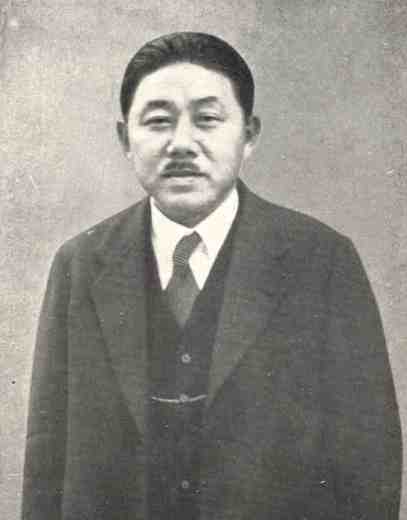Mishio Ishimoto on:
[Wikipedia]
[Google]
[Amazon]

 Mishio Ishimoto (, September 17 1893 – February 4 1940) was a Japanese
Mishio Ishimoto (, September 17 1893 – February 4 1940) was a Japanese

 Mishio Ishimoto (, September 17 1893 – February 4 1940) was a Japanese
Mishio Ishimoto (, September 17 1893 – February 4 1940) was a Japanese seismologist
Seismology (; from Ancient Greek σεισμός (''seismós'') meaning "earthquake" and -λογία (''-logía'') meaning "study of") is the scientific study of earthquakes (or generally, quakes) and the generation and propagation of elastic ...
, doctor of Science
A Doctor of Science (; most commonly abbreviated DSc or ScD) is a science doctorate awarded in a number of countries throughout the world.
Africa
Algeria and Morocco
In Algeria, Morocco, Libya and Tunisia, all universities accredited by the s ...
. He was a professor at Tokyo Imperial University
The University of Tokyo (, abbreviated as in Japanese and UTokyo in English) is a public university, public research university in Bunkyō, Tokyo, Japan. Founded in 1877 as the nation's first modern university by the merger of several Edo peri ...
.
Mishio Ishimoto is from Tokyo
Tokyo, officially the Tokyo Metropolis, is the capital of Japan, capital and List of cities in Japan, most populous city in Japan. With a population of over 14 million in the city proper in 2023, it is List of largest cities, one of the most ...
. After graduating from the Department of Physics, Tokyo Imperial University
The University of Tokyo (, abbreviated as in Japanese and UTokyo in English) is a public university, public research university in Bunkyō, Tokyo, Japan. Founded in 1877 as the nation's first modern university by the merger of several Edo peri ...
in 1917, he was the director of the Earthquake Research Institute. He studied such as consideration of the magma intrusion theory regarding the cause of earthquakes and the proposal of a push-cone shape regarding the P-wave
A P wave (primary wave or pressure wave) is one of the two main types of elastic body waves, called seismic waves in seismology. P waves travel faster than other seismic waves and hence are the first signal from an earthquake to arrive at any ...
initial distribution of seismic waves
A seismic wave is a mechanical wave of acoustic wave, acoustic energy that travels through the Earth or another planetary body. It can result from an earthquake (or generally, a quake (natural phenomenon), quake), types of volcanic eruptions ...
, Relational expression between maximum amplitude of ground motion
Ground motion is the movement of the Earth’s surface from earthquakes or explosions. Ground motion is produced by seismic waves that are generated by sudden slip on a fault or sudden pressure at the explosive source and travel through the Eart ...
and number of occurrences. He also invented Silica inclinometers etc. In 1933, he received the Imperial Academy Prize for his research on ground motion measurement.
References
{{DEFAULTSORT:Ishimoto, Mishio Japanese seismologists University of Tokyo alumni Academic staff of the University of Tokyo Scientists from Tokyo Recipients of the Order of the Sacred Treasure, 3rd class 1893 births 1940 deaths